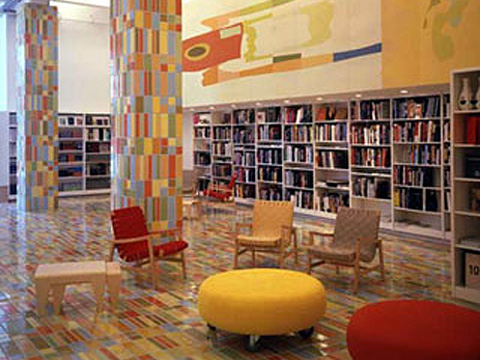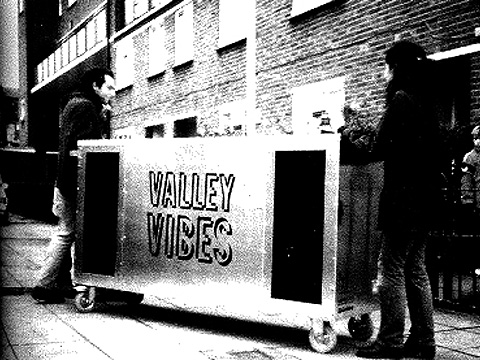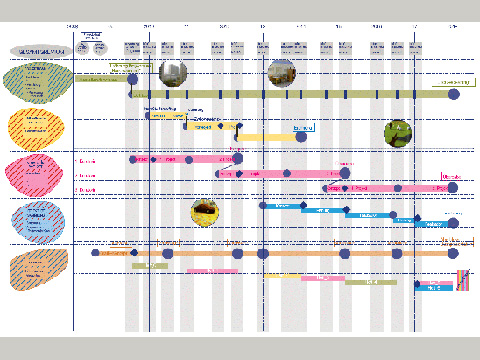Master Project
Karin Frei Bernasconi
1 January 2008–1 January 2018
Triemli Spital, Zurich
The Triemli municipal hospital is having a new high-rise added to its facilities for 290 million CHF, to undergo construction between 2008 and 2013. In addition, several major areas of the hospital are going to be structurally altered and expanded between 2008 and 2018: the plans include a new parking garage as well as a protective roof over the main entrance, the conversion of the present hospital room high-rise into an administration building and an ambulatory nursing centre, structural alterations in the entrance hall, the expansion of the kitchen building and the new landscaping of the outdoor areas.
Following completion of the construction measures, the three personnel high-rises adjacent to the hospital grounds will be torn down. In keeping with a municipal council resolution of 1962, in the city of Zurich 0.35 to 1.5 percent of construction costs are traditionally spent on art projects enhancing the respective architecture. Altogether 1 million CHF are thus available for the realization of new artworks for the Triemli municipal hospital.
“Nests”
“Nests” is a curatorial concept for an art project at the Triemli hospital, to be carried out over the entire ten-year period in which the hospital complex and operations undergo decisive changes. The hospital is not only the quintessence of a highly sensitive societal system in which life and death, joy and suffering often go hand in hand; it is above also a public space – a social nexus of persons of varied origins and societal strata with individual biographies.
Concept
For the concept and script of “Nests”, the dynamic handling of an unusual time span – ten years – is of central importance. Here the following aspects all play a role: Art is a permanent theme, it is always present, it opens up means of participating in the transformation of space. Art intermeshes with the space and the operations taking place there, art integrates itself in self-evident manner into the everyday hospital routine, it is part of social life.
Not merely a single intervention – in the sense of a “drop sculpture” supplementing the buildings – but rather five curatorial fields of action will trigger a large number of interventions thematically interwoven with one another by way of a conception of art as a social space. In the way a bird builds its nest or animals dig little dens or lairs, artistic ideas lodge themselves in spatial, communicative and social zones of the everyday hospital routine: in the entrance hall, the cafeteria, the hospital television station or the hospital magazine, temporarily or permanently.
“Nests”: Project Structure
Accompanying text: In the rhythm of the construction process, five curatorial fields of action will be established, installed permanently or temporarily, but also mutually overlapping, reciprocally questioning and condensing one another: project space, permanent installation, curator on location, re-reading collection and memory.
“Nests”: Script
The curatorial concept entitled “Nests” generates many authorships, many who join in the discussion and decision-making processes. It is conceived as an open process with uncertain outcomes which only become clearer over time. Embedded into the everyday activities of construction and hospital operations, it will use direct intervention in an endeavour to offer a functional basis and sensual stimulus for social exchange, to create spaces which can serve as action spaces for widely diverse use, where a broad range of artistic, administrative, social, economic, societal and communicative things, activities and formats can co-exist.
“Nests” functions as a mediator between hospital operations and the art context (an entity foreign to the hospital), and at the same time as a permeable and reflective surface on which various realities can interpenetrate. This form of artistic intervention will generate a complex public addressing a wide variety of themes. To equal degrees, it will serve an already existing art public and a new public unfamiliar with art. It will seek exchange with the city in order to negotiate art in a different, expanded context and examine it critically. At the same time, these activities will draw public attention to and generate publicity for the Triemli municipal hospital.




